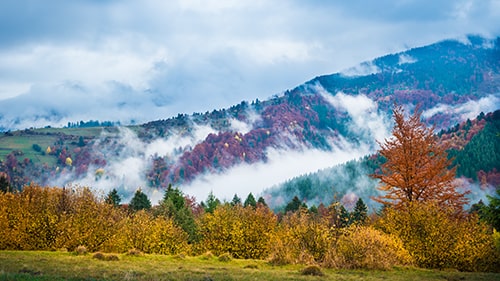generational trauma

in this program

perhaps the greatest question of our time is not whether we will achieve the scientific, technological, and consciousness breakthroughs that might allow us to solve systemic world problems and usher in one thousand years of peace and abundance, but whether we are prepared, individually and collectively, to embrace deeper, wider spans of self- and other-awareness; to incorporate a new global ethics and a deepened sense of collective integrity; and begin, finally, to integrate the painful cultural shadows we feel rising to the surface all over the world, asking to be acknowledged and healed.

Thomas Hübl

in this program we’ll be looking at the work of several prominent teachers in trauma work, in particular that of Thomas Hübl. Hübl is a mystic, teacher, and author of Healing Collective Trauma, as well as founder of the Academy of Inner Science.
the world we live in

we are both I and We, body and society, psyche and culture.

Thomas Hübl

we live in a world that has gone through two world wars, the bloodiest culmination of a history of bloody wars. it is only through witnessing the destruction of the atomic bomb that some of us came to our senses. currently we are dealing with Covid, and in the time to come, we’ll be dealing with the fallout of climate change.
according to Thomas Hübl and other experts on collective and generational trauma, trauma is carried from generation to generation. Hübl compares trauma with karma. karma is like a heavy suitcase that we carry around. consider a difficult conversation you recently had. karma is the amount of distracting thought and painful energy you carried around after it. and because it occurred as a part of your busy day, you may not have had time to process the feelings or reflect on the problem. some of us are already so wounded that we simply suppress and repress all these unprocessed feelings. what we don’t see is that carrying all this unprocessed material consumes a significant amount of our energy. we are not free while bound to this suitcase of karma. at the same time, karma has nothing to do with blame, punishment, or retribution. there is only energy that is depleted by unprocessed feelings and emotions. when triggered, these feelings burst through as reactions. the energies kept in the form of karma block us from being attuned and present to others, ourselves, and the current situation.
those who are born into situations of high violence, crime, war, or a community where ancestors suffered deep oppression and pain may have little understanding of the origins of their symptoms or their inability to be present and mindful. this is the insidious nature of generational trauma. it is collective, and, like a fish unaware of the water it swims in, those most deeply affected by it may have no or little understanding of its nature or effects on them.
trauma can evoke intolerable levels of fear in the present moment, even when no objective threat is present. when we cannot be with this fear in a connected and responsive way, we avoid it with patterns of disconnection and disassociation. we unconsciously disable functions of consciousness. a culture of traumatized people is a container for unresolved conflict, which, in turn, gets projected onto others and the world, creating further trauma. research on generational trauma suggests that second and third generation descendants of trauma survivors often carry the greatest burden of collective trauma. these descendants often experience their trauma as “normal reality.” the nervous system has changed so much that dissociation becomes normalised, and even more feelings are left unresolved. the resulting shadow obscures truth and hampers the development of resilience.
generational trauma (also known as intergenerational trauma, transgenerational trauma, and multi-generational trauma) is the trauma that is experienced by a family, group, or culture, and gets passed down from one generation to the next. here we see the dark secrets and hidden dimensions play out through the conventions of each passing generation. many parents, who have themselves been traumatized, are often surprised when they hear that their own children have been similarly wounded. they believed they could recognize the signs and break the cycle of trauma. and yet, rather than embodying heightened awareness, they lived the dissociation, detachment, and silence of their own generation. additionally, traumatized individuals often unconsciously re-enact their prior victimization or terror, taking either the role of the victim or perpetrator. these patterns of unconscious repetition become a major source of societal and domestic violence.
when we reflect on the innumerable wars, torture and execution of individuals, mass genocides, forced migrations, extermination of first nation people, kidnapping, trafficking, enslavement, the Holocaust, the dropping of atom bombs on Japan, the Chinese invasion of Tibet, human rights abuses, persecution of refugees, and on and on, it becomes easy to get a sense of trauma passing from one generation to the next.

to many in spiritual communities, and for those most concerned with humanity’s future, the question arises, why spend so much time on the past? the answer is that for most of us, the past is our future. we cannot engage an authentic future until we are done recreating the past. life seeks to digest the unintegrated past by recreating it in ‘new’ experiences.

Thomas Hübl

a human response

the paradoxical truth is that to be global witnesses, we must remain conscious of current events in our communities and in the world, but we must learn to do so with all capacities online — where no part of us has checked out or become dysregulated. this is no small task. refusing to sink to hysteria, polarization, or cynicism requires conscious vigilance.

Thomas Hübl

generational trauma requires that we attend to our world’s pain with thinking minds and feeling hearts. to serve in presence as true global witnesses, we must be willing to consciously feel and accept all that has been split off, dislocated, and denied. we must choose to be present witnesses for pain, for terror, and for trauma. we must be willing to consistently and consciously resolve those energies that have been left stored rather than processed. “trauma” describes the inner dysregulation that takes place when a person is triggered and ancient fight, flight, freeze, and fawn reactions take place. in order for us to overcome the reaction, we need time to process what has happened and adequately work through its content. however, the trauma does not only affect the individual, but also those close to them. it becomes a collective experience. we must wake up to the pain we carry, because it stands between us and healthy evolution. trauma slows down our developmental process, because we avoid all the situations where we feel unable to cope. we live as a shadow of our true self. everything we do not face, or have not faced, will take some form in our own future, or that of our children. if we are to grow into wholeness, we must integrate our individual and cultural shadows.
from Hübl’s perspective, we need to develop two forms of practice in our lives if we are to heal from trauma. the first is state practice, where we reach for higher states of consciousness. these modalities already exist in the form of meditation, centering prayer, and contemplation. these practices allow us to experience moments of immense clarity and peace. the more we allow this to happen, the greater our capacity for growth and evolution. as we progress in our practice, we may increasingly experience a sustained sense of Being, thereby bringing about a more permanent realization.
the other form of practice is process practice. here we learn to embody what we experience in higher states of consciousness. we learn to walk our talk. “realization” is often interpreted as the ability to think about, or understand. however, realization in its fullest sense means that the practice has become continuous, it has become part of who we are. this embodiment carries equal portions of rational intellect, emotion, and spirit. process practice is done in our daily activities, wherever we may find ourselves. we don’t need to change our ordinary lives to do these practices. they fit perfectly into our life, and arise with attention. more and more, we realize that the practice is not something we do, but who we are.

my being partakes of your being and that of all beings. this goes beyond interdependency — our very existence is relational.

Charles Eisenstein

the past that becomes the future
unconscious trauma is destiny. it drives us and makes decisions outside our control. choice only becomes possible through consciousness. in the context of trauma, the past is not what happened yesterday, but what stayed behind from yesterday, including all the unresolved energies we carry and that consume our capacity to remain fully present and awake. the past overshadows this moment.
the real future is the download from higher consciousness that changes my today; the potential of all resonant possibilities coming into being. the only way to access this real future is through consciousness development. this healthy and evolutionary future cannot come into existence as long as we unconsciously hold onto yesterday, because as long as we hold on, we can only repeat yesterday with the same old reactive patterns.

unintegrated, unconscious past is destiny. it becomes a false future projected into tomorrow, built of repetition, preprogrammed by our unawakened aspect. it is like taking the road behind us, placing it in front of us, and calling it the ‘future.’

Thomas Hübl

the more of the past we carry into the present, the less available we are for attunement, and the more likely we’ll be to project our interior condition onto the world. Hübl calls the time we need to process and integrate our experience “aftertime.” during aftertime, we project the past onto tomorrow, so that our future is not one of innovation or higher development, but rather an attempt to integrate what has already occurred. a collective experience like the Holocaust or a war may take us centuries and many generations of aftertime to process, and an authentic future can only emerge from integration of the tragedy.

[in this way,] trauma injures not just relation but perception, causing us to see our world with greater distortion. this is important to understand, because although most of us believe we see our world accurately, very often we see only part of it and even that view is “through a glass, darkly.” seeing through the filter of the past is a recipe for conflict. in order to perceive ourselves and our world more clearly, we require resonance and relation with others, just as every infant needs the mother’s empathy and attunement in order to begin to see and know its world space.

Thomas Hübl

in today’s world it is easy to see how cultural trauma occurs and accrues, leading to the amplification of distortions in societal perceptions. these misperceptions, which are often based on limiting stereotypes, can easily become cultural agreements. we see the world through a lens of collective distortion.
when we work with ourselves, we discover an evolutionary tension. the light meets the shadow, aliveness meets contraction, potential meets the past. the territory is complex, and it is easy to become confused between healthy integration and further repression or avoidance. transparent communication is the tool that enhances our attunement with others, and allows us to disentangle areas of misunderstanding. the wisdom traditions give us profound teachings for this work, providing guidance for questions such as “how can i be changed by my work?” “what is the essence of healing and trauma work?” “what abilities can we develop?”
healing can become a cultural activity. in order for this to happen, we need to create a we space that enables us to include and outgrow the shadows of our trauma, learning to embrace them consciously and precisely, so they can come to healing. the mystical principles underlying this healing process are integrating the past (shadow) and presencing the future.
working with collective trauma

despair, mindfully held, brings us face-to-face with the darkness within ourselves and the world.

Miriam Greenspan

over the last fifteen years Hübl has worked in large and small groups to find ways of healing collective trauma. he has found that there is a consistent pattern to this process. in the initial stages, the process evokes denial and resistance. this often leads to an eruption of intense energies, and participants begin to experience deep emotion. some groups may experience collective visions or ancestral memories, and working with these can lead to profound unburdening and release, creating deep openings into shared unconscious pain. for those who are able to remain present in the process of becoming aware of the dark unconscious, real change occurs. through processing karmic or traumatic wounds, we nurture the ability to establish healthy relations, bonding in attunement with others. through this process we develop a social resonance of pure and essential presence. for Hübl, this is the awakening of self-to-other, or love.
Thomas Hübl and Gabor Maté agree on the following realities in working with collective trauma:
- trauma is not an individual issue. it is a collective net that we have been born into. we call it “normal” because it is part of our collective structure.
- a collective trauma often flows out of a collective suppression.
- there will be individuals in the collective who express the symptoms of the collective in and through themselves.
- the heaviness of collective trauma is always part of our reality, but we’ve created a society that runs on speed and busyness, and this distracts us from the trauma in the society.
- we've lost many positive and healing collective experiences (like eating, singing, or talking together, as well as other rituals).
- collective trauma is already lodged in our society, and as more trauma — like Covid and climate change — occurs, the underlying trauma is triggered.
- we can see this in political processes, styles of leadership, and group movements worldwide.
one symptom of collective trauma is regression to earlier stages of development. we return to primary survival techniques, preoccupied with concern for safety. strangers are seen as dangerous or undeserving, and foreigners appear as aliens. like individual trauma, collective trauma manifests as hyperarousal or numbing, creating tendencies of social denial, dissociation, and suppression. collective numbness arises as substance misuse, food, sex, and entertainment addiction, and media overuse, to name a few. there is a collective shutting down to the crisis that needs healing.
culturally, our collective trauma expresses itself in forms of suppression, terror, poverty, war, confusion, and outrage. for those of us who live in the developed world, it is sadly easy to become entangled by the debilitating effects of posttraumatic stress, anxiety, addictions, and compulsions. these are all signs of generational trauma.

the ultimate question regarding the darkness we see outside us is not whether it will consume our world but instead whether we can reframe our understanding of that darkness. how can we come to recognize the dark as a part of ourselves so we may integrate its lessons and through them be transformed? and how would such healing, on a collective scale, advance the care of the planet that is our home?

Thomas Hübl

collective trauma reveals itself in individuals and communities where behavior is fixated, impaired, delayed, and/or disenfranchised. children in these communities experience higher rates of PTSD, and are more vulnerable to mental health issues. survival strategies like hypervigilance may be necessary for traumatizing situations, but when these behaviors become compulsive, fixated, and inflexible, they no longer benefit survival, and may even hinder it.
meeting trauma with presence

to do collective trauma work, we must first become very present. presence allows accurate discernment, so that we can differentiate the personal from the social and recognize when what we are witnessing belongs to the voice of the collective.

Thomas Hübl

Hübl uses Daniel Siegel’s (author of The Mindful Therapist) definition of presence: “the ability to create an integrated state of being that becomes a trait in our lives.” according to Siegel, when a system becomes integrated “it is most flexible, adaptive, coherent, energized (feeling vitality), and stable.” this stability manifests as the ability to move through a solid set of interactions that support their own unfolding in an adaptive way.

presence, then, emerges from integration — and can be given, shared. by generating an internal state of deepening integration, of presence, one can turn and extend a space or container or presence to another. in this way, integration can be mirrored, fostered, and made as an offering.

Thomas Hübl

when we work with collective trauma, presence is our most important and immediate tool. by connecting with the higher light of consciousness, we become much more subtly aware. we have a sense of energy flowing through us, and we connect with our interior dimensions in addition to our physical bodies. higher light offers greater potential. according to Hübl, it “exists just above the ceiling of our ordinary day-to-day consciousness and comes through when we’re inspired, creative, or innovative. it becomes more accessible through training, such as with meditation practice, which is why innovation is not a coincidence but a capacity.”
Hübl sees presence as a function of coherence, which he describes as the awareness of thought, feeling, and the body, and how these are aligned with the present moment. through this coherence, body-, mind-, and feeling intelligence work together, and we function optimally. in triggered or reactive moments this inner coherence is challenged. the past, with its distorted material, is activated and brought into the present. if our culture is not sufficiently informed about trauma and its management, we simply continually re-traumatize ourselves and those around us. we need state practices and resilience training to reverse these trauma cycles.
to do trauma work is to integrate what we lived through but could not fully experience. integration results in understanding, whereas non-integration results in the playing out of automatic patterns. these can be patterns in our individual nature or patterns in our environment and social nature. we were born into a world that is already fragmented. our nervous system learned from people who were already fragmented. we have all been educated by a world that is partly integrated and partly fragmented. what we’ve come to call “normal” is a state of stress, reactiveness, and broken communication. this leads to a split between the emotional, reasoning, and action lines of intelligence. one can, for example, be an expert on trauma and yet be very traumatized. we can have cognitive understanding, but no embodiment of that understanding.
to process feeling in real time, we need to have the time to respond to what we experience, reasonably, and we also have to feel the feelings that are evoked in us. who has the time to do this in our fast-paced world? for most of us, trauma remains unconscious or shadowed, and we know it only in our reactions and repetitive self-sabotage. we need presence to notice these processes, and the willingness to work with them intelligently.
to begin our collective healing process, we need at least three main practices. firstly, we need to self-regulate, so that we can be with experience in a relational way. secondly, we need practices that makes us more present, and thirdly, we need to practice the creation of community. we need to learn to reach out and not suffer alone so that a coherence loop is created. the more community we create, the stronger these loops become.
the creation of community facilitates sharing, which, in turn, facilitates healing. but Hübl points out the importance of recognizing that there is a qualitative difference between general sharing, which occurs at the level of the mental body, and attuned sharing. when we share with intention, presence, and attunement, the experience becomes somatic and emotional in addition to cognitive. this process occurs holistically, including our mental, emotional, and physical bodies. when we are listening with presence, we require sensitivity and connection to the body. we need emotional receptivity and awareness, so that we can pay attention to the quality of receptivity in ourselves and others. whether we’re listening or speaking, relational attunement invites us to be aware of the quality of energy inside us. when we feel connected to what we’re saying, this energy flows easily and obviously. for Hübl, learning to observe these dynamic flows of energy within us and between us and others lies at the heart of being present.

the impact of human-created suffering extends beyond the original subject or subjugated group; trauma’s legacy weaves and wires our very world, informing how we live in it, how we see it, and how we see and understand one another.

Thomas Hübl

unconscious trauma results in the creation of societies and societal structures that deepen trauma, simply because we see it as normal. through the practices suggested by Hübl, we can create the space to just listen. we can listen to awareness itself. when we do this, we experience a sense of inner space, or inner seeing; a sense of expansion and stillness, even timelessness. this experience can radically alter what we see as “normal”, and help us to redefine what we want our societies to look like.
cultivating emotional energy fields

true healing requires us to be more available to ourselves, more willing to feel and reside with the authentic emotions presented by our experience, not less.

Thomas Hübl

when we watch children play, we can notice how their energy reaches outwards, typically through curiosity. if during this process they are scared by one of their discoveries and move closer towards their mother, the energy comes back to their safe place. the fear that was felt when they reached outwards becomes grounded in the safety of the parent. in this way, a natural adaptation to the fear is internalised, and the child learns not to be scared of fear. the system becomes adapted to its own safety, enabling the individual to meet the world with courage and curiosity. in the process, the nervous system learns to find homeostasis between relaxation and curiosity, between going out and coming back.
if during the process of growing up the parent cannot hold a safe space for the child and its fear, the child is forced to keep the fear locked in the body, rather than letting it flow into the parent. for those of us who experienced trauma while growing up, stress is constantly held in the body. even when we feel relaxed, the body is unable to fully let go of the tension. anxiety is our “normal” and we may even find it present in our meditation. we may find that when we sit down to meditate, the mind switches on this anxiety and it becomes impossible to relax, to be with experience, or to enter into deeper meditation.
according to Otto Scharmer, when a culture or group experiences traumatic disruption, there are two basic responses. we can either turn backward or lean forward. turning backward is the freeze reaction. “freezing the mind, the heart, and the will — also known as ignorance, hate, and fear. we turn backward in order to ‘make great again.’ the most important word of that line is again, because it’s an orientation to the past, a projected state that we seek to reestablish.”
leaning forward means allowing what we don’t already know. we’re leaning into the emerging future, and this requires an open mind, open heart, and open will. these arise only when we can access our capacity for curiosity, compassion, and courage. Scharmer calls call this leaning forward the cycle of presencing, becoming present and connecting with our highest future possibility. in contrast, turning back is a process of absencing, because it results in being absent from our current situation.
creating a we-space is a crucial component of the leaning forward process. we can do this through the intention of holding space and witnessing for everyone’s ancestors. for example, when one person talks about their grandfather, everyone in the group listens whilst holding a higher perspective in witnessing consciousness. this creates a multiperspectival view of “grandfather” and the group may even feel a relatedness to this person. this is the result of attunement. with refinement and training, we can gain the capacity for other awareness in the healing relationship.

the Collective Voice is archetypal and universal, and its message can be delivered to the group field through one or more people.

Thomas Hübl

creating a container for light

when transgenerational trauma is echoed by and stored within the substance of a body, mind, or culture, we require new capacities in consciousness to discern, hold, and integrate it. higher consciousness allows us to become present to past and repeating conditions. in full presence, we may channel the clear light of the future into the substance created by the past, to open and heal it, and therefore ourselves. as the third eye, heart, and base energy centers align, the soul begins to transform karma, a process of conscious evolution.

Thomas Hübl

our societies are built on deep cultural trauma agreements. the first and most prevalent is our belief that we are separate beings, wholly distinct from one another. this translates into seeing ourselves as separate from nature and the planet. we believe that we have to conquer the earth and use its inanimate resources. through integration we come to know that we are the earth, and that hurting the earth is hurting our own body.
when we’re contracted into egoic awareness, and blocked by fear, anger, attachment, and habit, the nervous system is constricted, having no access to higher energy. we cannot access the light from our real future, our resource of potential. this prevents many people from experiencing inner light, or even seeing it as real. yet, the light of consciousness, or awareness, is always right here, fully available. it is only made inaccessible by the contraction of ego.

our life’s most inspirational conversations and healing interactions share some quality of deep presence, which makes it possible for subtle light to flow within and between us.

Thomas Hübl

according to Hübl, working with a group is like working with a single nervous system. when we can help members of the group to stay present and deeply listen to one another around a shared intention, we can help the group to stay regulated. we can sense when the collective nervous system is activated or starting to shut down, and we can respond in order to bring it back into harmony, thus creating a space where the light of awareness can flow between the group members.

the space we are able to create is directly correlated to our quality of presence.
the light we are able to access is directly correlated to the space of presence we create.
Thomas Hübl

the inner state of the facilitator is very important in this process. they need to be able to feel, embrace, and stay present with what is in the space. authentic and aware leadership creates safety, and allows for deeper coherence. when all of these are present, a sense of trust and curiosity unfolds throughout the space. emotional vulnerability opens, and profound shared states become possible.

our nervous systems release deeply held unconscious material either when we’ve been unskilfully broken open or in careful conditions in which we’re created a conscious container for its release to occur — like ripe fruit dropping from a tree.

Thomas Hübl

when we come together in coherence, a synchronized collective field is created in which we experience heightened awareness of self and others. this group presence radically multiplies the flow of information through group participants, upleveling the collective intelligence. this is the act of presencing that Otto Scharmer defines as linking ourselves in a very real way with our highest future possibility, and allowing this to come into the present. through shared intention, conscious attunement, and presencing, we can induce a state of group consciousness.

these subtle tendencies first arrive as whispers. we learn to hear them by creating mindfulness, stillness, and presence so that our higher guidance has a place to land. on that still quiet lake, in the silence of the heart, it may be possible to hear the name of the Divine.

Thomas Hübl

for a much more detailed description of the group process and its containment, we suggest that you read Thomas’s Healing Collective Trauma. he is a true master of this process, and describes it with depth and clarity.
the wisdom of trauma

it is not true that we only develop when we feel loved, cared for, appreciated, respected, and admired; we also grow when we are despised, belittled, held back, and denigrated. if we use our intelligence — the Mahayana type of intelligence — we will find a way to grow through those situations.

Traleg Kyabgon

Hübl reminds us that the trauma response is a form of intelligence. it is the reaction that tries to make us safe. it is up to us to decide how appropriate it is, and whether we want to keep it as the way we respond to difficult situations. Peter Levine describes how traumatic experience can open portals into spiritual paths. traumatic experiences contain immense energy, the kind of energy that can make the body move involuntarily or freeze it into torpor. when we can contain the trauma response, the energy held in the body releases into openness, oneness, connection, and compassion.
trauma unites all humanity, because we’ve all encountered perceived threats and the reactions they trigger. we see reality through the filter of the traumatized mind, and only when we can release these energies consciously will the filter fall away.
trauma is about broken connection, to self, other, and spirit. we’re caught in the fixation of our identification. at the same time, trauma connects us. it is the same response that aches all over the world. trauma is not something we fix, it is something we build a lifelong relationship with, and through this relationship we engage the process of being more alive and more embodied.
for Hübl, spirituality means we live a lifestyle that facilitates consciously preserving the essence of life. unconscious energy is a destiny, whereas conscious energy is a possibility. the more we wake up and become aware of our shadow, trauma, and conditioning, the more we have the choice to act out of the possibility of our life.
Gabor Maté reminds us that painful experiences can be wake-up calls or turning points. they invite us to question ourselves and our nature, using the turning point as a guide. we can explore the meaning of the turning point and what it means in terms of what we want to learn. Maté sees our capacity to examine our own mind as an indication that the answer of the problem lies within. we are the most powerful resource for ourselves. concurrently, being in community is embedded in our nature, and we are wired to communicate. our deepest healing potential lies in the we-space. the same we-space that can traumatize us can also heal us most deeply. the difference lies in how aware we are of our suffering, and how ready we are to let it go.

times of chaos and challenge can be the most spiritually powerful... if we are brave enough to rest in their space of uncertainty.

Pema Chödrön

communication can be used either in an unconscious or conscious way. every human radiates an enormous amount of information in every moment. if we’re the receiver, and we’re attuned and present enough to receive the information, we become a much more refined tool in the communication space. our presence can be a profound tool. relational trauma happens due to a lack of communication and presence, and healing takes place through attuned and present communication.
the overwhelming and uncomfortable parts of our experience are the shadow towards which we need to bring the light. our system naturally wants to heal, and will present us with many opportunities where shadowed aspects can be re-integrated. Hübl, borrowing from Judaism, reminds us that one of the most important things we can do for our awakening is to create an environment around us that supports our highest expression.

the collective psyche is holographic: we are both one and many, unique and unified, individual and whole. we are each responsible to each other, to our ancestors, and to our descendants, as well as to the Earth, which is our home. together, i believe we can and must heal the “soul wound” that marks us all. in so doing, we will awaken to the luminous possibility and profound potential of our true and mutual nature as humankind, a collective race of beings within the greater Cosmic order.

Thomas Hübl






